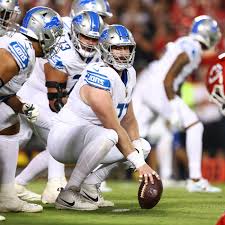
Lions Roster Construction: A Strategic Approach to Offensive Spending
The Detroit Lions have been carefully navigating the NFL’s salary cap in recent years, making calculated moves to build a competitive team. As the Lions look to contend in the NFC, their approach to roster construction
particularly on offensehas been marked by both prudence and aggression. In terms of cap space allocation, Detroit has struck a balance between investing in key offensive positions and
ensuring long-term flexibility. As of now, the Lions’ offensive spending reflects their desire to build a potent attack while also maintaining financial health for the future.
The Lions’ offense is in the midst of a transformation, led by offensive coordinator Ben Johnson, who has infused a high-powered, diverse scheme. While Detroit’s offense still centers on the development of young talent, the front office has made several impactful investments to surround the offense with
playmakers. These investments, however, are strategic in nature, making sure that each dollar spent adds value to the overall roster.
The biggest financial commitments for the Lions have been in securing the quarterback and skill positions, which are critical for any offense to thrive. The most significant expenditure has come with the contract of quarterback Jared Goff. After being traded to the Lions in 2021, Goff’s deal was initially seen as a bridge move
, but with his strong performance, the Lions decided to commit to him as their franchise quarterback. As of now, Goff’s contract is not crippling in terms of cap space, and Detroit has structured it in a way that allows them to remain flexible while still relying on Goff’s consistency under center.
Beyond the quarterback, Detroit has made a series of decisions aimed at improving the offensive line and receiving corps. The offensive line is an often-underappreciated unit, but it’s clear that the Lions have recognized its importance in both the passing and running games. They’ve invested heavily in this area,
both in the form of free-agent signings and draft selections. Players like Taylor Decker, Frank Ragnow, and Penei Sewell represent significant financial commitments, but they have proven to be cornerstones of a line that provides both stability and the ability to protect Goff and open lanes for the running backs.
In the receiving game, Detroit has spent wisely, adding talent around Goff while also looking for value. The Lions’ decision to bring in wide receiver DJ Chark, and subsequently drafting Jameson Williams, highlighted their focus on providing dynamic playmakers on the outside. Chark’s one-year deal was a high-risk, high-reward move that paid off, while Williams’ rookie contract provides an opportunity to
develop a star receiver without breaking the bank in terms of cap space. The Lions have also bolstered the tight end position, adding solid contributors to give Goff more options in the passing attack.
Running back is another critical area for the Lions, and their approach here reflects the modern NFL’s trend of de-emphasizing the position in terms of cap investment. While the team has invested in building depth in the backfield, the Lions have been cautious not to overcommit financially. The tandem of Jamaal
Williams and D’Andre Swift has worked well, with Williams’ departure in free agency opening the door for a more balanced financial approach to the position.
Overall, the Lions’ offensive cap allocation emphasizes keeping the core together while remaining adaptable. They’re not splashing cash unnecessarily, but making sure that the key positions quarterback, offensive line, and
playmaking receivers are well-funded. This allows Detroit to have a competitive offense while being mindful of long-term salary cap flexibility.
Leave a Reply